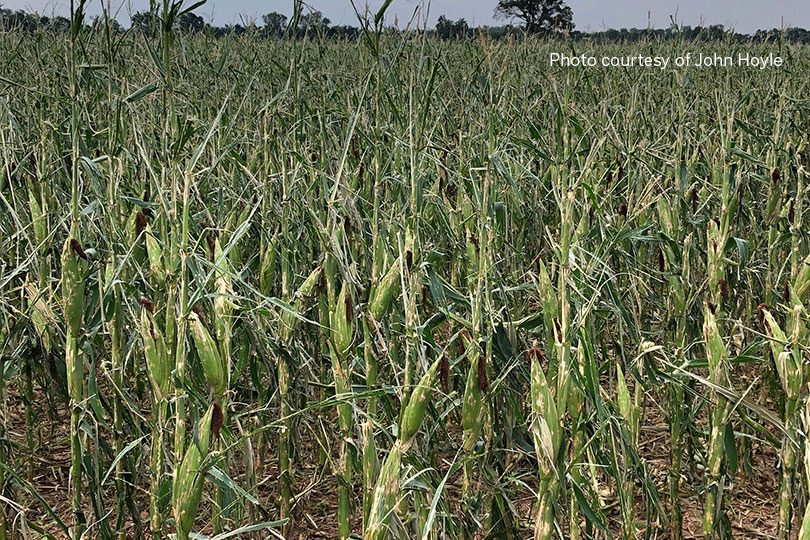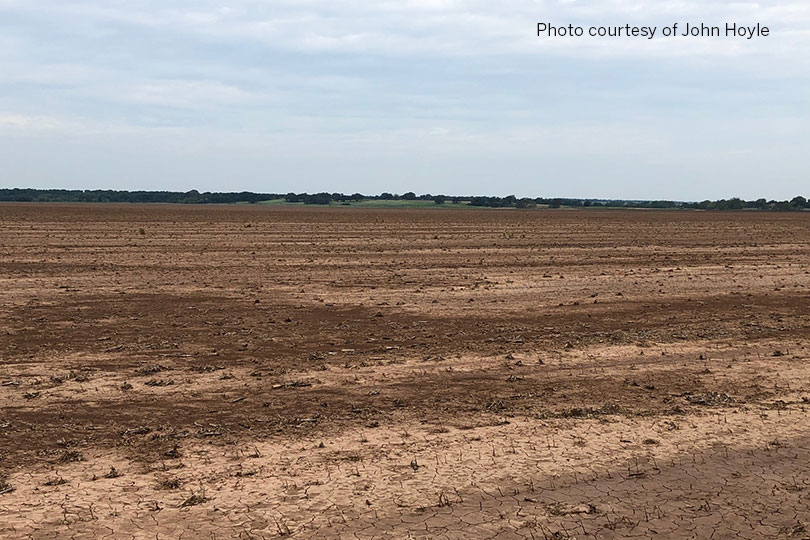By Jennifer Dorsett
Field Editor
Storms rolled through Central Texas in late May, bringing heavy rain, strong wind gusts, flooding and hail.
Corn, cotton, vineyards and more were damaged by hail ranging from marble to baseball in size.
Although the hailstorm in his area was brief, Mark Perry, a McLennan County Farm Bureau member, said it was intense.
“We got marble-size hail that lasted about 10 minutes,” Perry said in an interview with the Texas Farm Bureau Radio Network. “We have about 200 acres of corn with pretty major damage. Part of it, we’ve only got basically a stalk and an ear left. Some of the other is just got where it had beat up different amounts of the leaf, up to 90 percent on some of it.”
Perry’s dryland corn crop was at the blister stage, a critical growth period where the corn kernels begin to form. Stress at this time can reduce kernel size and weight, and some kernels may fail to develop.
Harvest is still the plan, but Perry is expecting about a 50 percent loss in yield due to the hail damage. It’s especially disappointing, because this year’s crop was looking good in terms of yields, he added.
“We were hoping for 125 bushels per acre or maybe even a little more than that,” he said. “But that damaged corn, we’re now predicting somewhere around 60 to 75 bushels in yields. This corn was bruised pretty bad. The stalk was bruised, and the ears were bruised, so I’m not exactly sure how that’s going to all turn out.”
Most Hill County farmers were fortunate, but McLennan and Falls counties bore the brunt of the storm, certified crop advisor and Hill County Farm Bureau board member John Hoyle.
“Hill County was mostly spared, but as you go further south on the Brazos River, there’s very little left, if anything, in a lot of the fields and very severe damage,” Hoyle said. “Cotton and corn both, and in some cotton fields, there was nothing but sticks left.”
Although some corn crops may survive, Hoyle noted area cotton was very young and not likely to make it through intense hail.
“On some corn, there’s only light damage, so it’s likely many fields will be salvageable,” he said. “But corn that was lightly damaged opens itself up to secondary diseases, so we’ve got to really be on the lookout from a disease standpoint now.”
About 2,500 acres of corn and about 200 acres of wheat were destroyed by the storms, according to Texas A&M AgriLife Extension Service.
“There was just a lot of hail and up to 4.5 inches of rain in pockets, so a lot of fields were just standing under water for a few days,” Hoyle said. “Hopefully, we don’t have any more hail this summer, and we’ll be feeling a lot better about it.”



There was more than 2500 acres of corn destroyed. I had half of that myself.